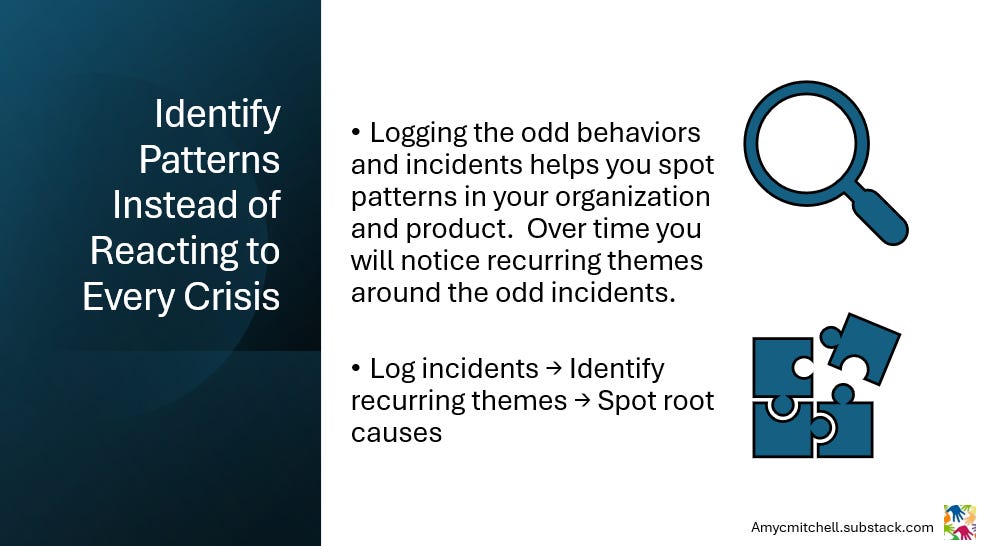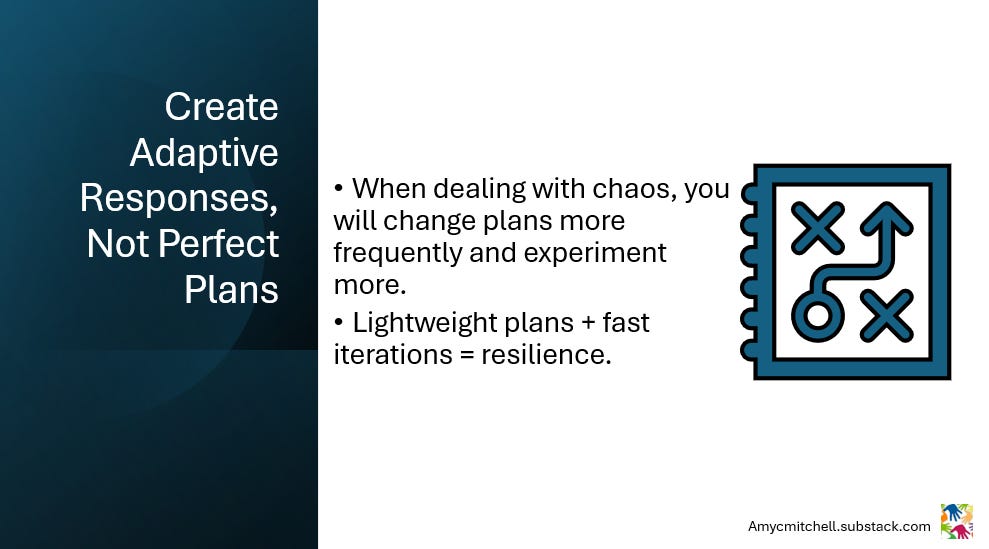Product Management in the Twilight Zone
How to Stay Effective When Uncertainty is the Only Constant
One day, everything seems normal. Then next people act strangely, decisions don't add up, and leadership is quiet.
This is your "Twilight Zone":
Program management shrugs off the missed date. The SKUs aren't ready. Too bad.
Stakeholders commit to features without consulting you. They say it's a minor oversight.
Pricing for a partial solution is given to a customer. The customer knows what is best.
The product team doesn't waste time reading requirements. Each part should work fine.
Many product managers are waking up to this new Twilight Zone:
new products,
new domains,
matrixed organizations
and rapid pivots.
This means product managers constantly face unexpected and irrational-seeming behaviors across their teams.
Uncertainty is the norm, not the exception.
The best product managers systemically reduce uncertainty by spotting patterns, taking control where possible, and staying productive. How do product managers operate in the Twilight Zone?
Chaos Is the Norm
The reality is organizations are full of misalignments, hidden constraints and react to changes. Products can't escape their organization. Product teams are touched by most organizational dysfunctions.
Instead of getting frustrated, simply expect chaos in your product environment. You don't need to fix the chaos that pops up daily. You can control more than you think.
The first step is shifting from "Why is this happening?" to "What's the next right thing?"
Identity Patterns Instead of Reacting to Every Crisis
Product managers put their hearts into their products. When these Twilight Zone events happen, product managers can become defensive about the risk to their product. A better reaction is to keep a log of the strange incidents.
Logging the odd behaviors and incidents helps you spot patterns in your organization and product. Over time you will notice recurring themes around the odd incidents.
Some of the potential causes of the strange events:
Disconnected incentives: teams that have conflicting needs
Leadership shifts: organization changes or priority changes
Process gaps: roles and responsibilities are unclear
Lack of leadership communication: pivots and changes partially communicated
Finding patterns in the chaos is the first step to shifting into doing the next right thing.
Create Adaptive Responses, Not Perfect Plans
If change is inevitable, then no one cares about plans. However, plans are useful to mark progress and coordinate with others.
When dealing with odd behavior in the organization, you will change plans more frequently and experiment more. This adaptive response helps you communicate about changes. Even in the most chaotic organization, there is a baseline of products and customers.
What does this mean?
Define a lightweight plan of experiments. Then iterate quickly as you learn more.
If you are thinking there is nothing to base your plan upon, then you can fall back to what your customers are using as the base.
Find Stabilizers Amid the Chaos
It is challenging to rough out a plan when there are many unknowns. As you push to create a simple plan, you will find stabilizers.
Some key stabilizers:
Customer use cases
Organizational revenue goals
Reliable and responsive stakeholders
Stable business priorities
Build on a known foundation that doesn't change often. In some cases, you will define a foundation based on stabilizers.
When you have a stable foundation that you have defined, then you control the changes to it.
Connect the Dots and Protect Your Mental Bandwidth
The daily uncertainty and change can be exhausting. Reacting to changes that may or may not matter in the long term without a plan is futile. Some of the problems aren't worth solving!
You need to focus your mental bandwidth on product work that satisfies customers and meets your business goals. The rest of the noise can be prioritized away.
The way to protect yourself and still deliver great product results is:
Establish your foundation in relation to your stabilizers
Write short-term plans that adapt to priority changes
Sharpen your pattern matching to safely ignore low-priority changes
Your foundation is controlled by you. Spending your thinking time on your foundation shields you from a lot of the chaos.
Conclusion: Leading Through the Twilight Zone
The Twilight Zone of product management isn’t going away. Rapid changes, misalignment, and unexpected behaviors will always be part of the job. But the best product managers don’t get lost in the chaos—they navigate through it.
By shifting from reaction to recognition, you can spot patterns and anticipate issues before they derail progress. By creating adaptive responses instead of rigid plans, you stay agile in an ever-changing environment. And by anchoring yourself in stabilizers, you ensure your work remains focused on what truly matters—customers, business goals, and long-term product success.
You may not be able to control everything, but you can control where you focus your time and energy. The key to thriving in uncertainty isn’t fighting the chaos—it’s learning to move through it with clarity and confidence.
If you want to go deeper into handling your twilight zone in product management, these new templates help you rise above the chaos. (paid subscribers).
Last week’s backstory for paid subscribers was my story of balancing my lone wolf PM tendencies. Can a Lone Wolf PM Improve?
Paid subscribers get access to 10+ templates and quick start guides.🎁
TLDR Product listed Product Management IRL articles recently! This biweekly email provides a consolidated email of recent product management articles.
Check out Product Management Free Resources for free product management resources.
Connect with Amy on LinkedIn, Threads, Instagram, and Bluesky for product management insights daily.











i found out that those chaotic aspects, that we all face sometimes, can also affect the mental sanity of PMs. Had people talking about jumping out the window in the past. It is not always easy keeping it together, when you put your heart into the product, as you say!
A PM's job might then not be to perfect plans, but can be to plan for imperfection.